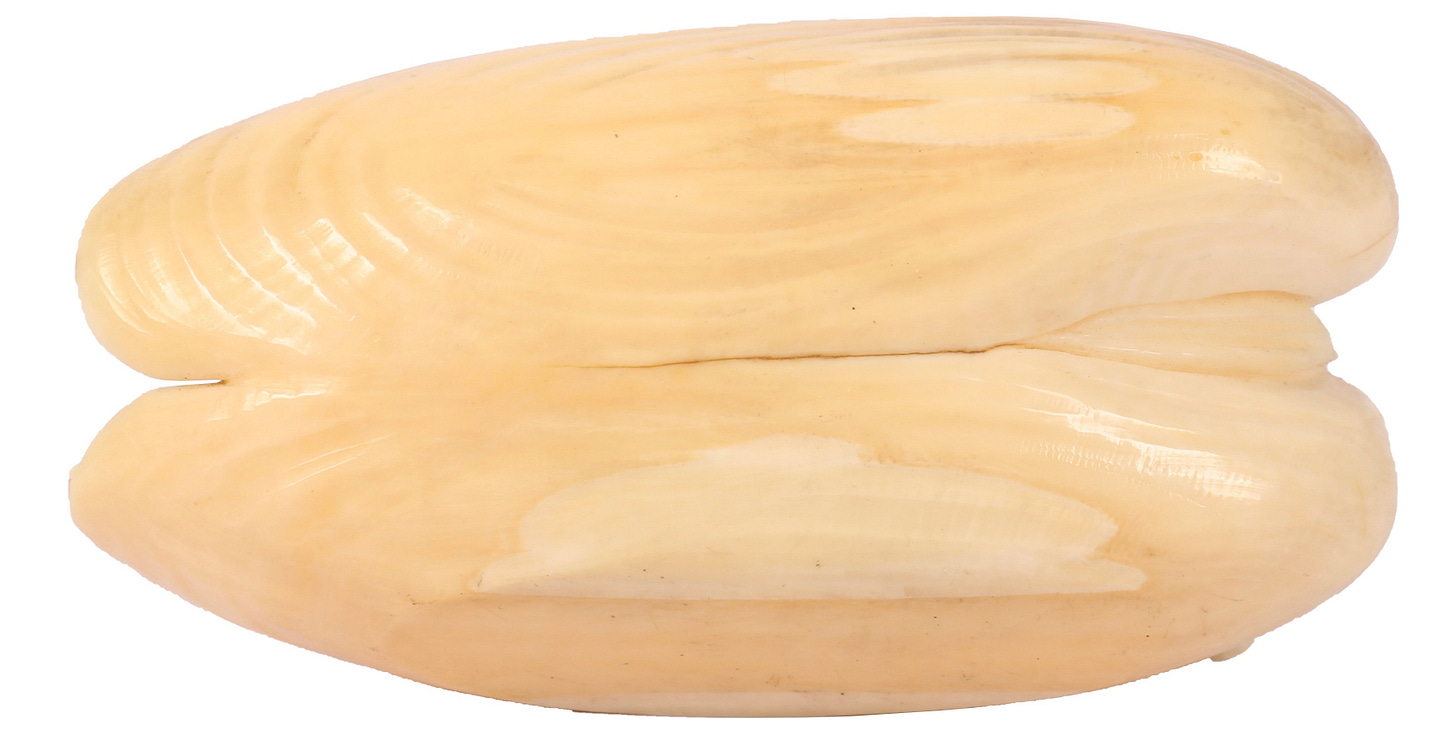Art: Media: Ivory
A MONTH OR TWO LATER, while on a visit to Chacallit, Lorna accepted Luther’s invitation to visit the mill one morning to “say hello to the girls in Links,” and to see “some of the new products we’re going to be making in ivory.”
Herb ’n’ Lorna, Chapter 9
As an art medium today, ivory is a hugely controversial topic as it involves the killing of elephants for their ivory tusks. Historically, ivory was an important material for ornamental, decorative, and artistic use as well as for purely functional use. …
Ivory, while most popularly associated with elephants, has also been derived from such animals as mammoths, walruses, hippos, and narwhals. Ivory forms the teeth and tusks of such animals and occurs as the same material no matter what animal it is taken from. …
Artistically speaking, ivory has a rich history as an art medium. Historians believe that ivory was so popular in times of antiquity that certain elephant species found in the Middle East and Northern Africa were driven to extinction. Ivory was an important commodity of the ancient Silk Road being particularly valued by the Chinese. In Asia ivory was used to make small items like opium pipes and large items like ornately carved screens. Carved ivory statues were also popular items traded on the Silk Road. In Europe ivory was used to carve small statues of saints.
Many cultures prize ivory jewelry. Ivory can be carved into small beads or remain as a larger carved cabochon. Because ivory is a luxury item, it has been viewed as a material denoting status. …
Today, even where ivory trade is not banned, it is greatly restricted and monitored. The drop in elephant populations led to this ban in the 1980s, but poachers have continued to diminish many threatened populations. Organizations like the United Nations took the lead in placing bans on ivory trade and many governments have supported their mandates regarding ivory. Many ivory items have been replaced by plastics or other materials. Given the ups and downs of these bans, it is likely that ivory will continue to be closely monitored for years to come.“The Art Medium Ivory” on ArtHistory.net


Recently watched on the treadmill:
You should be able to watch The Man Who Knew Infinity for free on Kanopy by using your public library card or university affiliation to access it.
The film is based on or derived from or inspired by The Man Who Knew Infinity: Life of the Genius Ramanujan by Robert Kanigel.
[more to come on Tuesday, August 2, 2022]
In Topical Guide 307, Mark Dorset considers Art: Media: Ivory from this episode.
Have you missed an episode or two or several?
You can begin reading at the beginning or you can catch up by visiting the archive or consulting the index to the Topical Guide.
You can listen to the episodes on the Personal History podcast. Begin at the beginning or scroll through the episodes to find what you’ve missed.
You can ensure that you never miss a future issue by getting a free subscription. (You can help support the work by choosing a paid subscription instead.)
At Apple Books you can download free eBooks of “My Mother Takes a Tumble,” “Do Clams Bite?,” “Life on the Bolotomy,” “The Static of the Spheres,” “The Fox and the Clam,” “The Girl with the White Fur Muff,” “Take the Long Way Home,” “Call Me Larry,” and “The Young Tars,” the nine novellas in Little Follies, and Little Follies itself, which will give you all the novellas in one handy package.
You’ll find an overview of the entire work in An Introduction to The Personal History, Adventures, Experiences & Observations of Peter Leroy. It’s a pdf document.



